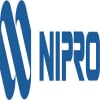The Food and Drug Administration made a first-of-its-kind decision back in April 2016 when it allowed Johnson & Johnson to switch from batch production to continuous manufacturing for the HIV medication Prezista (darunavir).
Though the company's foray into continuous manufacturing started well before that approval, J&J notes that it's learned a great deal about the process in the past two years. BioPharma Dive talked with Mauricio Futran, vice president of advanced technology and technical operations for Janssen Supply Chain, about those lessons and problems still left to be solved.
This interview has been condensed and edited for clarity.
BIOPHARMA DIVE: How did J&J get into continuous manufacturing? Can you discuss the early days and the more recent process of implementing that manufacturing with Prezista?
MAURICIO FUTRAN: Historically, we have always understood the benefits of continuous manufacturing. It gives you a big advantage in efficiency, it reduces all kinds of waste, it requires a much smaller footprint of the equipment in the actual facility. And as an engineer, to me one of the biggest advantages is that you have all the steps of the process running at the same time in a single room. That gives you the opportunity to use sensors to measure how the process and the product are doing, and you can do adjustments upstream to get the results that you want coming out of the equipment. So that's always been the attraction.
Other industries like the petroleum industry have been doing continuous manufacturing for a hundred years or so, so it's not a brand new concept. However, to do it in pharma — and then to do it especially where we jumped in, which is solid dosage drug products — that had a whole new set of challenges because the petroleum industry mostly does liquids, and also because there are the regulations from the FDA, the other agencies.
J&J has been a longtime member of the Engineering Research Center based at Rutgers, which includes Purdue, [the New Jersey Institute of Technology and the University of Puerto Rico]. One of the key goals of that research center was to develop continuous manufacturing for solids. And so as a member of the consortium and having the internal understanding of the benefits of continuous manufacturing, when the consortium developed the technology and got essentially the proof of concept, J&J decided to jump in and do it.
Most companies have gone into this arena through the R&D effort, using a new product to put on the platform. The problem with that is that new products come and go. J&J decided to start with an existing product, which is the Prezista 600 [mg], for a variety of reasons. It's a very important drug, first of all, for HIV patients. This particular dosage form is direct compression, which means it's a simpler process than others. And it's a product that we know well, that's very stable. That made it a very good candidate for the technology. So we partnered with Rutgers and the other universities and proceeded to design a line to make this happen.

How difficult has the switch from batch production to continuous manufacturing been?
FUTRAN: The biggest hurdle was technological on the one hand, and ... developing what the FDA likes to call the control strategy; how are we going to manage the line and ensure that everything we make is of high quality? That's part of the work we did with Rutgers, and some of it we did ourselves.
We built our first line by buying individual elements from various vendors and integrating them both mechanically and then electronically from an electronic control aspect. That always has challenges. And then, again, working on the characterization of all the pieces of equipment — the feeders, the blenders and so on — for this specific formula, and understanding the mathematics; the terminologies; the residence time distribution; how the material behaves; how, if you were to have material that's different, how it spreads along the way as it moves from beginning to end. We needed to get all those things nailed down so we could bring it through to the FDA.
The FDA was a good partner. They were willing to meet with us several times and gave us feedback on our proposals, which we then used to fine tune it and eventually get the approval.
And how were those conversations with the FDA? Was there a lot of back and forth?
FUTRAN: There was some of it, not a huge amount.
Again, I think we did our homework pretty well. The Engineering Research Center also works with the FDA and they understood what the concerns were going to be. So there was not an awful lot of back and forth, but we did go a few times, present our plans, our models and so on, and got their feedback and adjusted as needed.
In assessing continuous manufacturing at J&J over these last few years, what results have you used to measure whether the switch has been worthwhile? Are you looking for things like better quality or faster production?
FUTRAN: I always like to emphasize it's not about getting better quality, because we never release product that's not of the highest quality, but it has to do with the efficiency with which you get the quality.
When you do batch processing, you do each operation — say, charging and blending a bunch of solids. You put it in a bin, you blend it and you part the bin and you fill up several bins. Then, you get them tested and get the results back. If there is an issue with one or more of them, you don't find [it] until you've done a whole bunch of them. Or, many times you make it into tablets, you code them at the end, you submit them for testing and you don't find out that there was an issue until you've made several batches. So that can be inefficient if you have problems.
With a continuous line, because we incorporate sensors and we monitor how it's doing in real time, all those issues go away. We're always aware of the quality of the product as the line runs. So that's been a big advantage.
It also gives us a better way to respond to market needs because it's not a fixed-sized batch.
You can decide to do an eight-hour run or three-day run or whatever upfront and then make all you need for the current market needs. We've realized those benefits.

And efficiency. You mentioned that earlier. How does J&J measure that?
FUTRAN: It's mostly the ability to make what you need when you need it. [With continuous manufacturing] you do get it faster because, again, in batch you tend to run sequences of many batches from beginning to end. You start the machine, you sterilize it, and you're making product that's ready.
Also, we have the sensors on the lines. You don't have to do inequality labs because you know it from the sensors right away that everything is working well. And we continue to expand the number of tests that we can do right on the line as opposed to the lab.
So if sensors are so important for assuring quality in continuous manufacturing, why can't or don't companies just apply them to batch production?
FUTRAN: It's a good question. They can be, and we are starting to apply them in some places.
It's just that you're still going to go ahead and process a big chunk of material to an endpoint, and so you're still going to charge it all in, do whatever you're gonna do, blend, compress, whatever it is, and then look at it and at the end. You can look at it with a sensor right there, or take it to the lab, but you've already invested all the time and effort to do these operations, and if there's anything wrong with it — say you have to throw it away because of something bad — you throw away the whole thing.
When it runs continuous, you have a little bit of material that's always going through the line and if there's any issue you can segregate and divert. Then you restabilize your line and continue manufacturing. So you're only throwing away a small fraction if there is an upset, whereas when you make a whole batch and there is an upset the whole batch is compromised. There are several advantages like that you don't get unless you go continuous.
What lessons has J&J learned about continuous manufacturing over these past few years? Are there any questions about the process still haven't been answered?
FUTRAN: We learned a lot from the challenges we faced on integration, control systems, all that stuff. We're still optimizing the line, not only in terms of the production itself but also the turnaround because we want to use it for multiple products, so the efficiency in terms of cleaning and resetting the line for different product. We're still learning some of these lessons.
Elsewhere, we have other lines that we're using for more complex processes. We'll be filing those soon.
Also one thing that's happening is several of the companies, we're sharing our lessons with each other because this is really a pre-competitive arena. We're all doing the same thing.





















